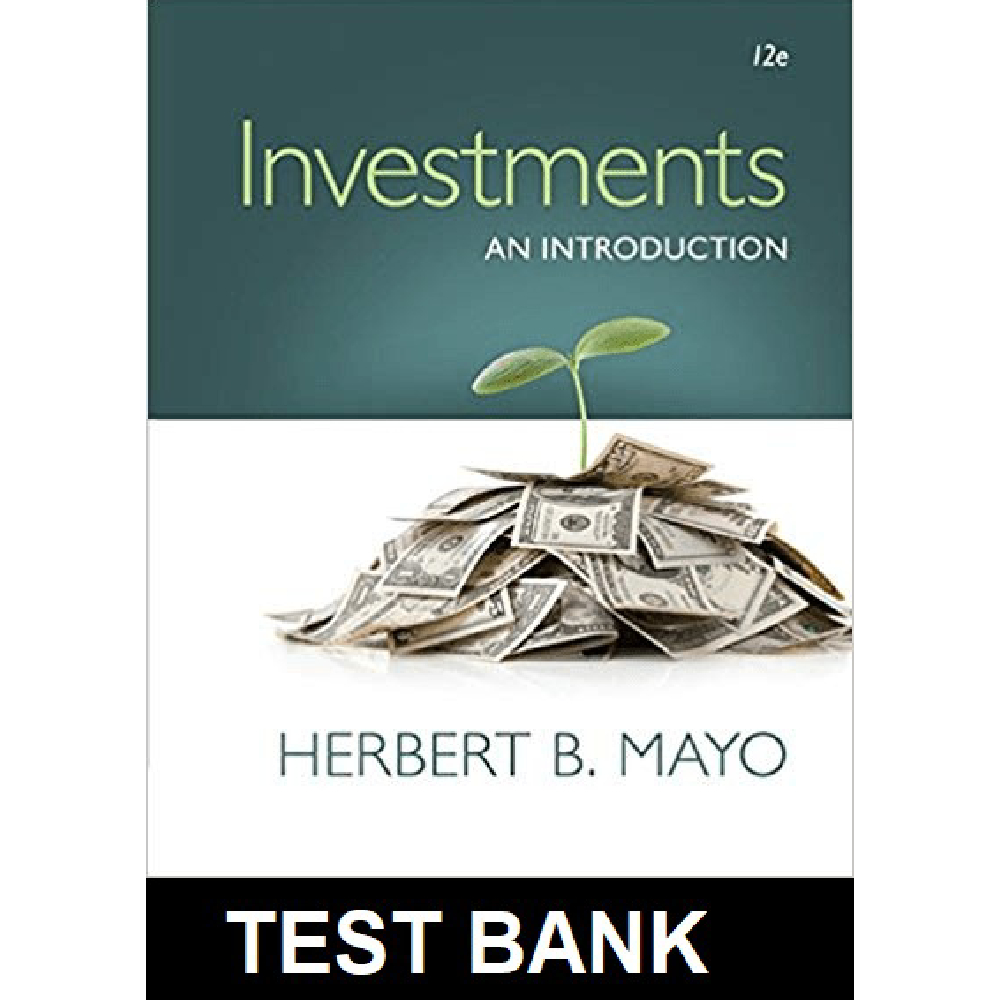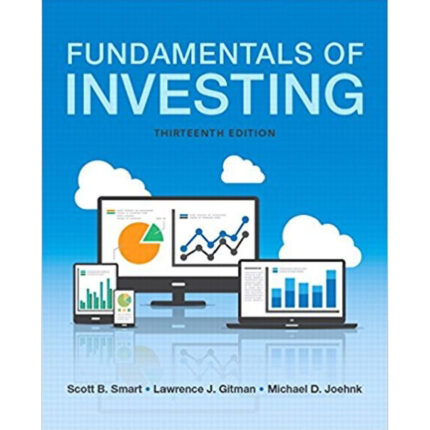Investments An Introduction 12th Edition BY Herbert – Test Bank
Chapter 11 The Macroeconomic Environment for Investment
Decisions
TRUE/FALSE
F 1. Economies go through regular, identifiable cycles that can be forecasted with accuracy.
T 2. The Federal Reserve is the central bank of the United
States.
F 3. A recession is a period of rising employment.
F 4. The federal funds rate is the rate federal government
pays when it borrows funds.
T 5. Open market operations is the buying and selling of
securities by the Federal Reserve.
F 6. An easy monetary policy increases the cost of credit.
T 7. The money supply, defined as M1, includes currency,
coins, and checking accounts.
F 8. M 2 is a narrower definition of the money supply and
excludes savings accounts in commercial banks.
T 9. If the Federal Reserve sells securities, that reduces
commercial banks’ capacity to lend.
T 10. An easy monetary policy should generate a lower
required return for common stock.
F 11. An increase in stock prices is a lagging indicator of
economic activity.
F 12. Gross domestic product (GDP) is the sum of spending on consumer goods, government spending, and investing in stocks and bonds.
T 13. The federal funds rate is the rate banks charge each
other when they borrow reserves.
F 14. If the country’s exports increase, GDP declines.
T 15. Monetary and fiscal policy may affect stock prices
through their impact on corporate earnings.
F 16. Deflation is a period of rising employment.
F 17. An increase in the expected rate of inflation suggests that investors should sell the stocks of natural resource companies (e.g., gold and silver).
T 18. The price of gold tends to rise during inflationary periods.
T 19. Changes in the price of gold are often related to the anticipation of inflation.
F 20. An increase in the targeted federal funds rate implies that the Fed is buying securities.













Reviews
There are no reviews yet.